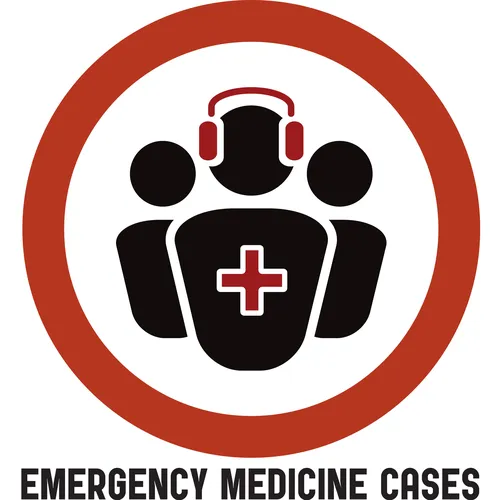EM Quick Hits 49 Stroke Management Update, Intussusception, 5 Penetrating Trauma Tips, Skin Foreign Body Hack, CT Radiation Risk, Emergency Fund
- Author
- Dr. Anton Helman
- Published
- Tue 06 Jun 2023
- Episode Link
- https://emergencymedicinecases.com/em-quick-hits-june-2023/
Topics in this EM Quick Hits podcast
Anand Swaminathan on endovascular therapy for large vessel occlusion ischemic stroke (0:38)
Sarah Reid on intussusception clinical pearls and pitfalls (8:45)
Andrew Petrosoniak on 5 tips on management of stable penetrating trauma patient (15:49)
Peter Toth on slit lamp hack for skin foreign body removal (23:31)
Nour Khatib & Jonathan Wallace on CT radiation risk (27:43)
Matt Poyner on the importance of an emergency fund (34:21)
Podcast production, editing and sound design by Anton Helman
Podcast content, written summary & blog post by Alex Chan, edited by Anton Helman
Cite this podcast as: Helman, A. Swaminathan, A. Reid, S. Petrosoniak, A. Toth,, P. Khatib, N. Wallace, J. Poyner, M. EM Quick Hits 49 - Stroke Management Update, Intussusception, 5 Penetrating Trauma Tips, Foreign Body Hack, Radiation Risk, Emergency Fund. June, 2023. https://emergencymedicinecases.com/em-quick-hits-june-2023/. Accessed September 16, 2025.
The eligibility criteria of endovascular therapy for large vessel strokes may be expanding in the future
* Current guidelines indicate endovascular therapy (EVT) for large vessel occlusion strokes occurring within 24 hours of presentation with neuroimaging demonstrating a small ischemic core with a viable penumbra
* The ANGEL-ASPECT and SELECT2 RCTs published in 2023 suggested that patients presenting with large infarcted cores receiving EVT were found to have superior neurologic outcomes compared to medical management alone
* In the SELECT Late retrospective study, there additionally appeared to be a benefit of neurologic outcomes for patients receiving EVT despite presenting with large vessel strokes beyond 24 hours of "last known well"
* Although the mentioned studies suggest benefit for EVT beyond our current eligibility criteria, further studies are needed before applying the evidence to clinical practices as SELECT was a retrospective study and biases and limitations were present
Update 2024: A prospective, multicenter, open-label, randomized trial including 253 patients with acute ischemic stroke due to large vessel occlusion in anterior circulation and a large established infarct (ASPECTS score of 3-5) and NIHSS less than 26 found that endovascular thrombectomy + medical therapy was associated with a shift in the distribution of scores on the modified Rankin Scale towards better outcome (adjusted common OR 2.58, 95%CI 1.6-4.15, P=0.0001), lower mortality (hazard ratio 0.67, 95% CI 0.46-0.98, P=0.038), and increase in patients with independent neurologic outcomes mRS=90%, and may be a valuable tool to decrease ED length of stay
* Abdominal X-ray is much less sensitive, but may identify complications such as obstruction or perforation
* The management of intussusception includes:
* IV maintenance and bolus fluids to treat hypotension or shock, early analgesia
* Empiric antibiotics if perforation/peritonitis are suspected
* Consultation with Pediatric Radiology and/or Pediatric Surgery for air enema reduction under fluoroscopy or ultrasound guidance
* Laparotomy is considered if reduction is unsuccessful
* Newer data suggests it is safe and reasonable to discharge patients post reduction of intussusception if they are observed to be stable in the ED for 4 hours
